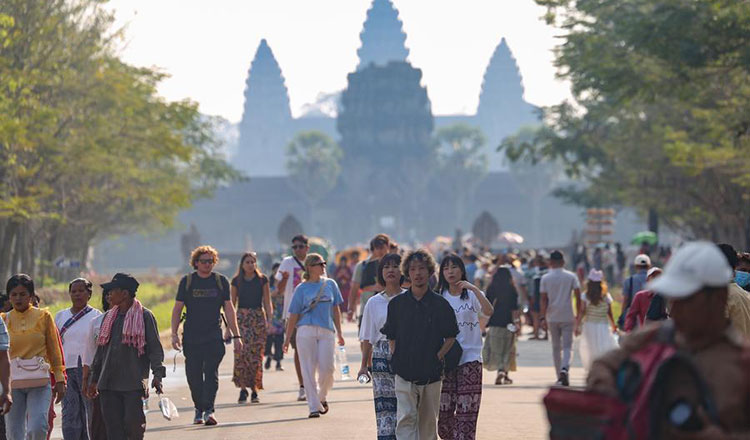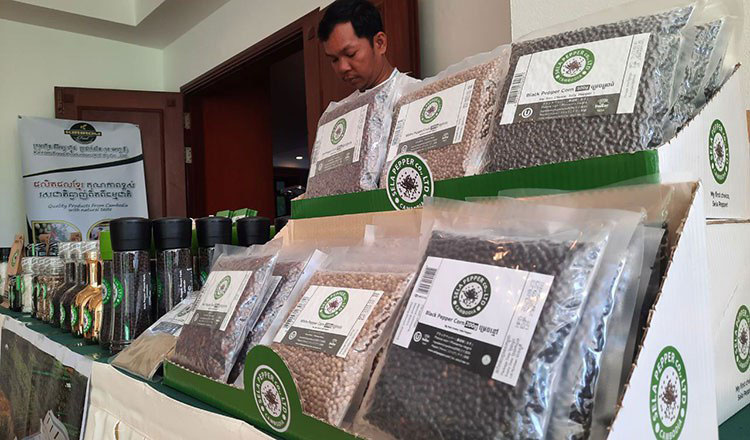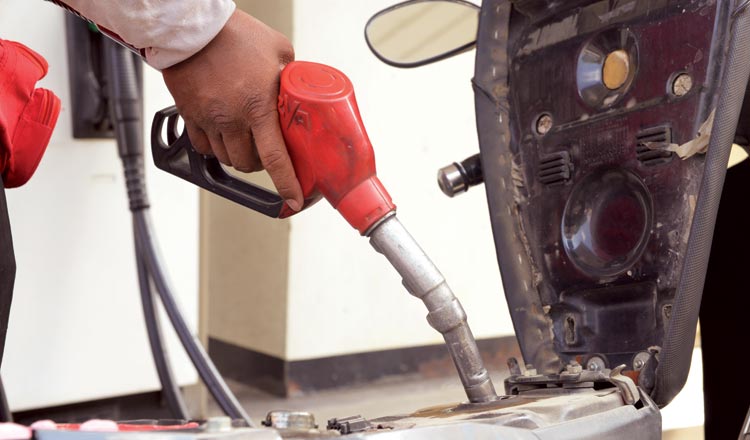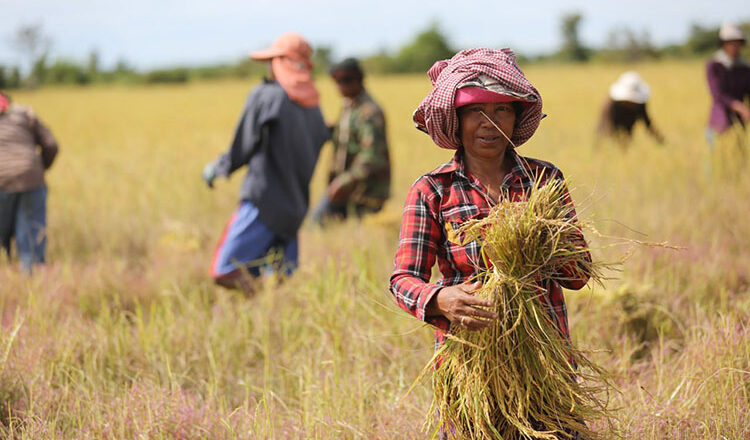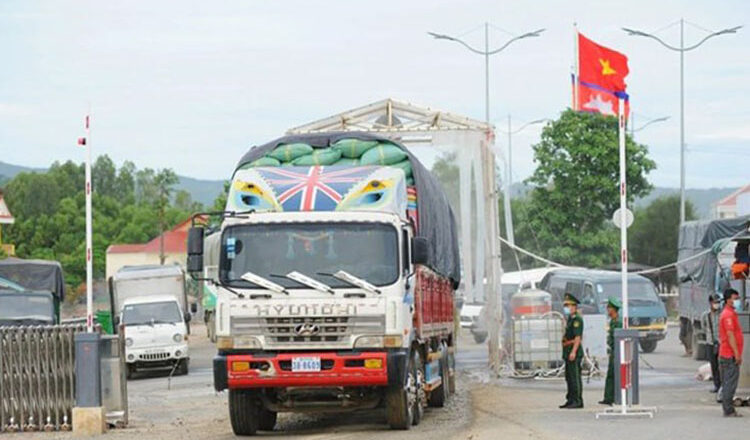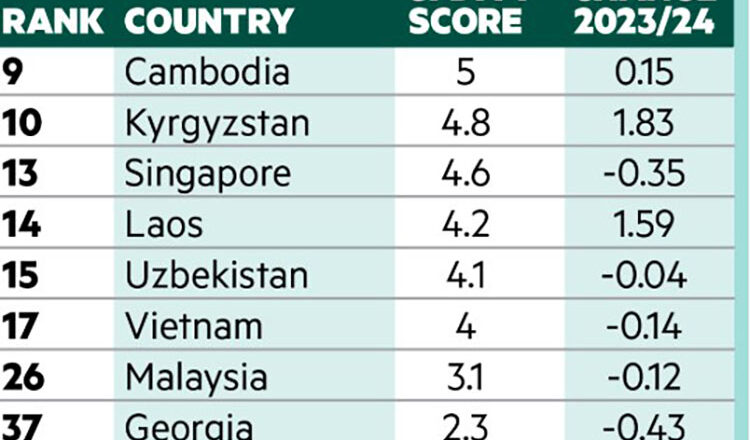Kingdom’s industrial sector projected to grow at 7.1%
Kingdom’s industrial sector projected to grow at 7.1%
In terms of industrial sector development in 2024, Cambodia recorded 2,425 large factories in operation, including 326 newly established facilities with a workforce reaching over 1.1 million, the Ministry of Economy and Finance report says.

Cambodia’s industrial sector is projected to grow by 7.1 percent in 2025, slightly below earlier forecasts, as slower expansion in garment and non-garment manufacturing offsets steady gains in automobile assembly and the food and beverage industries, while the construction sector maintains a gradual recovery, the Ministry of Economy and Finance said in its mid-year report on Saturday.
The garment sub-sector, the country’s largest industrial contributor, is expected to grow by 10.1 percent. While the sector benefitted from stronger-than-anticipated exports in the first half of the year – largely due to frontloading of orders ahead of the full implementation of US reciprocal tariffs – momentum is expected to ease towards year-end.
“The implementation of reciprocal tariffs on exports to the United States, particularly from August onwards, is anticipated to weigh on new orders in the fourth quarter,” the report stated.
Provisional tariffs of 10 percent were applied earlier this year, which encouraged early shipments, but the rate of 36 percent (effectively 19 percent) now presents a significant headwind for the sector.
Despite these challenges, exports to other destinations such as the European Union and China are projected to maintain a positive trajectory, partly offsetting the downturn in the US market.
The non-garment manufacturing sub-sector is forecast to grow by 6.9 percent, falling short of initial expectations. Tensions along the Cambodia–Thailand border have slowed the flow of raw materials, while the impact of reciprocal tariffs has extended to a range of export categories bound for the US.
Even so, the ministry noted that companies have adjusted supply chains by shifting to sea and air transport routes. Export growth in several non-garment categories has been notable in the first half of 2025, with electronic components rising by 24.3 percent, furniture by 39.4 percent, automotive parts by 10.1 percent, bicycles by 41.6 percent, tyres by 80.4 percent, and wires by 194.9 percent. In contrast, solar panel exports plummeted by 98.9 percent, driven by steep tariff hikes in the US market.
While export-oriented industries are facing pressure, domestic-driven production has provided a stabilising effect. The automobile assembly industry and the food and beverage sector have both posted steady growth, supported by resilient local consumption. Domestic value-added tax collections rose by 3.6 percent in the first six months of 2025, signalling stronger household demand and healthy domestic production activity.
The construction sector, meanwhile, is expected to record growth of 2.4 percent. High-cost commercial developments remain subdued, but the sector is being supported by medium-cost projects, particularly in housing and industrial facilities such as factories and warehouses.
Imports of construction materials surged by 46.2 percent in the first half of the year, while domestic cement output increased by 16 percent in the first five months. Low-cost housing construction is also gradually recovering, bolstered by the Royal Government’s eight-point policy package and further commitments made during the 19th Royal Government–Private Sector Forum.
MEF said that although the industrial sector is contending with external headwinds, including trade frictions and tariff disputes, Cambodia’s diversified export markets and resilient domestic demand remain key drivers supporting growth for the remainder of 2025.
The Cambodia Chinese Commerce Association (CCCA) has called for stronger efforts to diversify export markets and streamline government licensing processes to safeguard the economy against external risks, as the country’s industrial sector moderates to a projected 7.1 percent growth this year.
Speaking to Khmer Times, Lor Vichet, Vice President of the CCCA, said the slowdown in industrial expansion underscores Cambodia’s heavy reliance on exports, which leaves the economy vulnerable to external shocks.
“The slowdown in industrial growth to 7.1 percent reflects the current heavy reliance on exports for our economy, and therefore our exports have declined,” he said. “When our economy is heavily dependent on exports rather than domestic consumption, it also poses certain risks and impacts that we should pay attention to and take measures to prevent.”
Vichet noted that while the mid-year report from the Ministry of Economy and Finance cited a 36 percent tariff rate on Cambodian exports to the United States, in practice only 19 percent is currently being applied. “This is a level that we can still manage in the market,” he explained.
To enhance Cambodia’s competitiveness, Vichet urged the government to make improvements to the business licensing process. “The government should consider adjusting the licensing process, both the application fee and the review and approval time, so that it takes less time. This would improve Cambodia’s competitiveness,” he said.
He also highlighted the need for Cambodia to reduce dependence on the US market, which accounts for around 40 percent of the country’s exports.
“Although we have the US market, which is about 40 percent of the market, we must not forget the other 60 percent that should be strengthened and expanded. If we rely on only one export channel and this market declines, it will put our export-dependent economy at high risk,” Vichet stressed.
“Therefore, to prevent risks to the Cambodian economy, from now on we must strengthen and diversify exports to other markets,” he added.
It is worth noting that Cambodia’s industrial sector was projected to expand by 8.6 percent in 2025, supported by balanced growth in both the garment and non-garment manufacturing sub-sectors, while the construction sub-sector was expected to grow at a slower pace than its pre-Covid-19 levels, according to the Royal Government’s medium-term public financial framework for 2025.
The projection was outlined in a statement on the draft Law on Financial Management 2025, issued by the Ministry of Economy and Finance.
Cambodia’s total value of industrial products in 2024 surpassed $15 billion, with nearly $4 billion designated for the domestic market and more than $11 billion attributed to exports, according to the 2024 Annual Report and 2025 Planning released by the Ministry of Industry, Science, Technology and Innovation (MISTI) in February.
In terms of industrial sector development in 2024, the Kingdom recorded 2,425 large factories in operation, including 326 newly established facilities, while 26 ceased operations. With regard to special economic zones (SEZs), there were 30 in operation across 12 capitals and provinces, reflecting an increase of four zones, or more than 15 percent, on the previous year. Of these, industrial parks accounted for 20 zones in five capitals and provinces, an increase of three zones, or 17 percent, compared with 2023.
As for investment sources in 2024, the sector registered 32 domestic and foreign investors, up by two or more than 6 percent year-on-year. In terms of investment capital, large-scale industrial investment exceeded $20 billion in 2024, representing a 10 percent rise on 2023. Domestic investment contributed nearly $4 billion, accounting for more than 19 percent of the total.
- 08:20 26/08/2025




